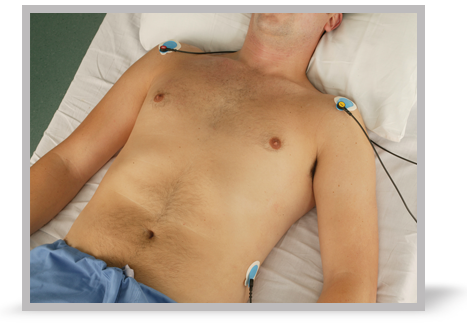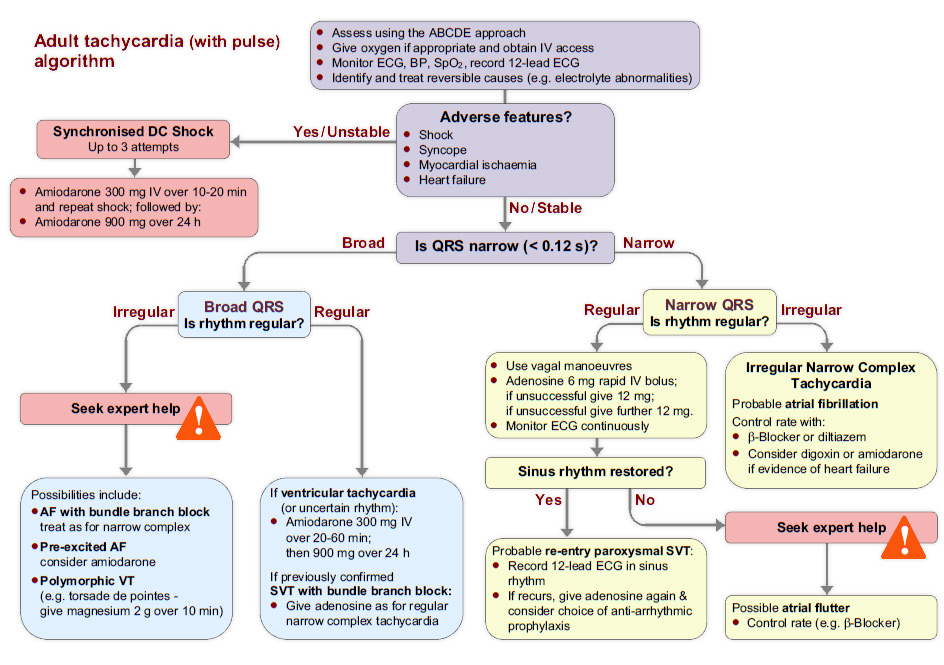
- Treatment and subsequent monitoring

Treatment options
Depending on the clinical status of the patient (i.e. the presence or absence of adverse features) and the nature of the arrhythmia, immediate treatments can be categorised under four headings:
- Electrical (cardioversion for tachyarrhythmia)
- Simple clinical intervention (i.e. Vagal manoeuvres)
- Pharmacological (drug treatment)
- No treatment needed
Most drugs act slower and less reliably than electrical treatments, so electrical treatment is usually the preferred treatment for an unstable patient with adverse features.
If a patient develops an arrhythmia as a complication of some other condition (i.e. infection, AMI or heart failure), make sure that the underlying condition is assessed and treated appropriately, involving relevant experts if necessary.
Subsequent monitoring and treatment
After successful treatment of an arrhythmia, continue to monitor the patient until you are confident that the risk of further arrhythmia is low.
Remember to always record a 12-lead ECG after successful treatment of an arrhythmia because this may show abnormalities (or absence of abnormalities) that will be important in planning future management.
Correct all reversible factors that may predispose to further arrhythmia. You must also ensure that appropriate expert help and advice is obtained at the most appropriate time for the patient.
References
See chapter 11 of the ALS manual for further reading about the principles of treatment for tachycardia.
Algorithm: The tachycardia algorithm
The tachycardia algorithm is available in chapter 11 of the ALS manual.

